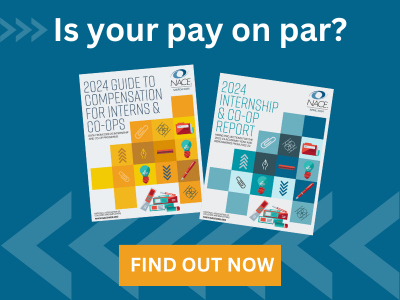Spotlight for Recruiting Professionals
Students clearly differentiate between personal social media—such as Facebook, Twitter, and Instagram—and LinkedIn. In Succeeding in the New Normal: Student Attitudes and Effective Virtual Recruiting, Mary Scott, president of the Scott Resource Group, says results of research and student focus groups indicate that students consider personal social media to be undesirable as a recruitment channel, whereas they view LinkedIn as professional online networking.
However, there are exceptions to this general sentiment that occur after students are hired, where personal social media platforms can serve a purpose in creating a way to connect a group, e.g. newly hired interns, but should be used sparingly, if at all, prior to that stage.
The value of LinkedIn, from the students’ perspective, is two-fold: They can message alumni and/or connections at employer organizations in which they have an interest as an online networking strategy; and, for those with highly desirable majors, their LinkedIn presence can attract the attention of employers who reach out to start an authentic conversation—and that can lead to a job.
On the other hand, when used by employers as a recruiting tactic, personal social media is not viewed by college students as authentic. Rather, as Scott reports one student commented, it is considered “a weapon of mass attraction.”
Scott offered several recommendations for employers using social media—both personal platforms and LinkedIn—in the college recruiting process:
- Do an objective cost/benefits analysis of social media platform investment.
- Understand how various candidate personas assess the appropriateness of using specific personal social media platforms during the recruitment process. There are distinct differences among cohorts, e.g. communications and retail majors versus engineering and IT students.
- Despite reduced opportunities to engage with students, fight the urge to use currently popular platforms such as Snapchat and TikTok, which focus group participants described as “cringey” and “lame” when used by employers as candidate outreach channels. Using such tools does not make an employer “cool.” Quite the contrary, according to abundant focus groups commentary.
- When using LinkedIn for recruiting, target students of interest, and reach out in an authentic way that references specific interest in them as a potential candidate. Do NOT carpet-bomb students with templated “robo messages;” students promptly detect and dismiss such outreach as highly impersonal and random.
- Be aware that students are skeptical of any LinkedIn outreach that appears to be “fake.” Scam postings, including pyramid schemes, are commonplace. Authenticity, again, is highly valued.
Succeeding in the New Normal: Student Attitudes and Effective Virtual Recruiting combines NACE benchmark data with qualitative data gathered through focus groups and provides recommendations for authentic recruiting in the virtual world. The whitepaper is free for NACE members to download.






